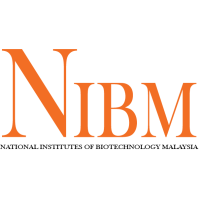A wild-Serbian medicinal mushroom Ganoderma lucidum strain BGF4A1 (GLSB) was isolated from Mount Avala, Serbia and morphologically identified based on its brown-liquorish cap and woody stipe. Molecularly, GLSB (642.8 bp) was sequenced and found to be 99% similar to the Serbian-originated G. lucidum strain BEOFB 434 and G. lucidum strain BEOFB 431. The isolate belongs to the G. lucidum species as the sequence dissimilarities (Knuc) value between both sequences of the same fungal species was 0.001. In submerged-liquid fermentation, biomass and exopolysaccharide (EPS) production of GLSB was optimised using response surface methodology. The interactions between three variables: initial pH (4–6), temperature (20°C–30 °C), and glucose concentration (10 g/L–50 g/L) were analysed using a central composite design. An analysis of variance revealed that the model was significant for all parameters investigated (p < 0.05). Temperature and glucose concentration were found to significantly influence mycelial biomass production, whereas for EPS production only glucose concentration had a significant effect. The model for biomass and EPS was validated by implementing the optimised conditions (pH 5.26, 50 g/L glucose, and 30 °C) and was found to generate the highest biomass (3.12 g/L) and EPS (1.96 g/L). An efficient EPS-biomass production blueprint was thus established using optimised parameters for large-scale cultivation of Serbian G. lucidum strains.
Data and Resources
| Field | Value |
|---|---|
| Subject Field of Research MRDCS 6th | Biotechnology |
| Subject Socio Economic Objective MRDCS 6th | Advanced Experimental and Applied Science |
| Publisher | |
| License | License Not Specified |
| Public Access Level | Public |
| Modified | 2022-07-13 |
| Release Date | 2019-11-26 |
| Identifier | 59720f5e-55ac-4250-93e4-fe22407f4eab |
The online version of this article (https://doi.org/10.1016/j.bcab.2019.101305) contains supplementary material, which is available to authorized users.

